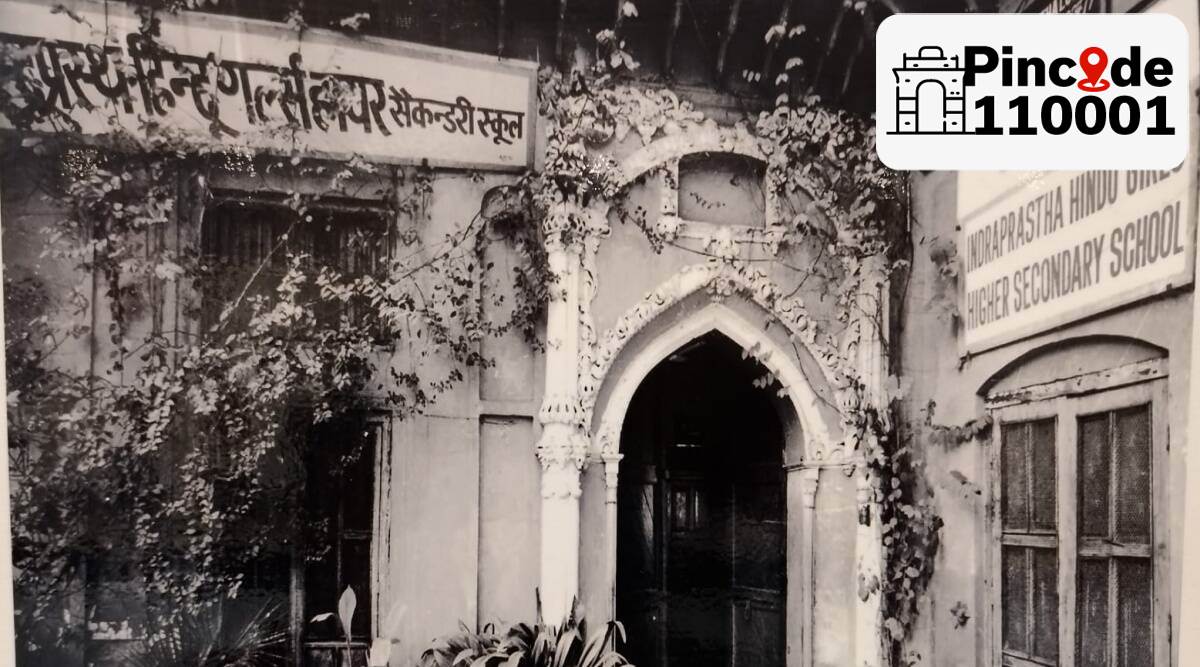 The Indraprastha Hindu Kanya Shikshalaya was founded in 1904 in a haveli at Chippiwara, Jama Masjid.
The Indraprastha Hindu Kanya Shikshalaya was founded in 1904 in a haveli at Chippiwara, Jama Masjid. The strong presence of women on Delhi University’s campuses, now a defining feature of the university, first began taking shape in a haveli near Jama Masjid, where Indraprastha College for Women – Delhi’s first women’s college – was born.
By 1922, there were 19 women’s colleges in India but none in Delhi. The earliest colleges that would go on to become part of Delhi University – St Stephen’s College, Hindu College and Ramjas College – had already been established. However, the wheels were already in motion for the eventual establishment of IP College in 1924.
In the early years of the 20th Century, Annie Besant made a speech to the theosophical society of Delhi, tying the “redemption” of India to the education of Indian women.
“The wife inspires or retards the husband; the mother makes or mars the child. The power of women to uplift… or debase man is practically unlimited and man and woman must walk forward hand-in-hand to the raising of India, else she will never be raised at all… out of our schools and colleges shall grow the India of the future… the battle for the education of girls is just beginning and may Ishwara bless those who are vanguard and all beneficent powers enlighten their minds and strengthen their hearts…,” read extracts from her speech, ‘The Education of Indian Girls’.
Subscriber Only Stories
These words laid the seed for a group of philanthropists and theosophists from Delhi in founding the Indraprastha Hindu Kanya Shikshalaya in 1904 in a haveli at Chippiwara, Jama Masjid, donated by banker Rai Bal Krishan Das. Twenty years later, the college started with three students in two rooms in the school building.
“What was interesting was that they had to persuade their compatriots to send their daughters to the school. The community was conservative, these were girls who were following purdah. So they hired chaperones and tonga carts to go from door to door to pick them up and take them to school,” said IP College’s current principal Babli Moitra Saraf.
A set of rules and regulations of the school from 1906 states that the object of the institution was to “impart to Hindu girls instruction in Hindi on approved modern principles and religious and modern education according to the tenets of Sanatan Dharma”. In their book, Women, Education and Politics: The Women’s Movement and Delhi’s Indraprastha College, Meena Bhargava and Kalyani Dutta have argued that the use of the term ‘Hindu’ and of Hindi as the medium of instruction were important in convincing conservative middle class and upper-class families their values and traditions would be preserved even if their daughters stepped out to study.
From 1906 onwards, students from other communities began joining the school too.
The traditional yet modern girls of the school studied their vernacular language, religious and moral teaching, ‘scientific study’ focusing on health and hygiene, physical training, and arts and music. In an interview to Sahapedia, Dr Meena Bhargava had outlined how the curriculum developed in response to changes in the institution and demands from the students. When it became a college in 1924, students began to study history, philosophy, economics and mathematics, along with things like hygiene, embroidery, music and sewing which would remind them, as Bhargava has put it, that they must study but not ‘become memsahibs’. English went on to be introduced in response to demand for students. In response to changing times and demands, commerce was introduced in the 1970s, a paper in computer application was introduced in the 1990s and in 1999 it introduced its own mass media course.
🚨 Limited Time Offer | Express Premium with ad-lite for just Rs 2/ day 👉🏽 Click here to subscribe 🚨
When the numbers grew, the college shifted to a bungalow on Alipore Road and eventually shifted to its current premises in ‘Alipore House’ in 1938. It witnessed another growth in student numbers in 1947-1948 when it took in women displaced from West Pakistan because of the Partition.
“There have been pendular swings between tradition and modernity which is a tightrope we walk all the time,” said Dr Saraf.
The freedom movement is when the women of the college came into their own strongly, and their active participation in the Quit India Movement led to the government stopping wheat ration for the hostel for two years from 1943 to 1945.
And then there were other affairs in which the women of the college took matters into their own hands. In 1956, the students demanded a swimming pool in response to which the government said it had no money for this. “So, the students and teachers dug up the swimming pool themselves and then turned to the government and said we’ve done half the work, now please give us money for the tiles,” said Dr Saraf.